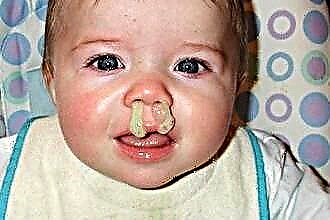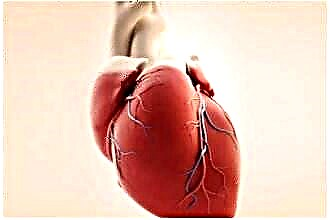Each serious damage to the mucous membranes and nasal cavities contributes to a further weakening of immunity and the activation of microorganisms. As a result, inflammation develops. Rhinitis, sinusitis, furunculosis is not a complete list of diseases that develop under the influence of certain microorganisms. While there are differences, nasal infections share some common symptoms and treatments.
Common signs
 Regardless of the pathogen, infectious diseases at the very first stage of development have almost the same symptoms. Appears:
Regardless of the pathogen, infectious diseases at the very first stage of development have almost the same symptoms. Appears:
- body aches;
- feeling of heaviness in the head;
- headache, dizziness attacks;
- chills;
- coldness in the fingers;
- high temperature.
General manifestations with the course of the disease can change, supplemented by signs characteristic of a particular disease.
So, if an airborne or respiratory infection remains in the nose, it manifests itself as sneezing, runny nose, and when it penetrates further along the respiratory tract, there is a cough, a tickling sensation, and the voice becomes hoarse. An addition can be local redness of the skin, swelling of the mucous membrane.
In addition, there is also general intoxication. Depending on the degree of poisoning of the body with toxins, these symptoms may be more or less pronounced. The poisoning process leads to the appearance of additional symptoms. The main ones are:
- feeling of constant weakness;
- fast fatiguability;
- deterioration in sleep;
- indifference to everything that happens around.
With an increase in intoxication, the symptoms that appear become more pronounced, sometimes vomiting, disturbance of consciousness, convulsions join them.
In case of the first signs of malaise, a doctor should be called. It is not recommended to go to the clinic, as you can easily infect others. For the same reason, you should not go to work or class.
How do different diseases manifest themselves?
Acute rhinitis is considered one of the most common diseases. It occurs as a result of the penetration of streptococcal and staphylococcal bacteria. Swelling in the nose, discharge, pain in the larynx, difficulty in breathing become characteristic. A person suffering from acute rhinitis ceases to distinguish between smells.
 Rhinitis polyposis is considered a fairly common problem. Most often, it becomes a continuation of the usual rhinitis, against the background of the course of which polyps are formed. They grow throughout the mucous membrane, affect the paranasal sinuses.
Rhinitis polyposis is considered a fairly common problem. Most often, it becomes a continuation of the usual rhinitis, against the background of the course of which polyps are formed. They grow throughout the mucous membrane, affect the paranasal sinuses.
Under the influence of anaerobic bacteria, sinusitis develops in the nose, and sinus inflammation becomes its vivid manifestation. The maxillary cavity is especially affected: natural ventilation is disturbed here, oxygen supply deteriorates.
With sinusitis, symptoms such as pain in the eyes, tearfulness are sometimes added, and with its maxillary form, the body temperature rises to 40 degrees.
Inflammation of the frontal and sphenoid sinuses develops under the influence of harmful microorganisms. In this case, we are talking about polysinusitis. It is characterized by the simultaneous defeat of all sinuses. Symptoms of the disease include weakness, headache, fever, heaviness and pain in the affected area, discharge with an admixture of pus.
The reproduction of harmful microorganisms in the nose leads to the appearance of furunculosis, when purulent inflammation of the hair follicles under the skin occurs. A pus-filled mass grows rapidly and spreads deeper. There are a lot of them if several hair follicles are affected.
The main reasons for the reproduction of harmful microorganisms
The rapid multiplication of pathogens of a certain disease becomes possible, first of all, due to weak immunity. In addition, it plays a role:
- contact with a sick person;
- insufficient level of personal hygiene;
- hypothermia;
- excessive use of antibiotics and other medications;
- violation of microflora.
 Instability to the effects of harmful microorganisms is noted with an unbalanced diet, a lack of vitamins and microelements in the diet. Bad habits, a sedentary lifestyle and constant stress contribute to the development of the disease.
Instability to the effects of harmful microorganisms is noted with an unbalanced diet, a lack of vitamins and microelements in the diet. Bad habits, a sedentary lifestyle and constant stress contribute to the development of the disease.
In the emergence of a viral disease such as rhinitis, for example, local immunity is of great importance. Therefore, similar problems are most often detected in children and the elderly, as well as in those who suffer from chronic diseases and are forced to regularly take medications. People who are too sensitive to temperature extremes suffer more.
Rhinitis is manifested by profuse discharge, itching and burning in the affected area, periodic congestion on one side. Moreover, edema is easily determined visually.
The appearance of sinusitis is caused by a viral or bacterial infection, and its development is facilitated not only by a weakening of local and general immunity, but also by its own factors. One of them is caries, and this happens especially often if the roots of diseased teeth come out into the cavity of the sinuses. As a result, harmful microorganisms spread to nearby areas.
Poor ecology becomes the cause of the multiplication of fungal infection, which, in turn, contributes to the development of candidiasis, aspergillosis, mucoromycosis, histoplasmosis, blastomycosis. The maxillary sinus usually suffers from them, and when the condition is neglected, even the orbit.
Treatment features
In some diseases, it is not possible to immediately prescribe the correct treatment, since their symptoms resemble the manifestations of other infectious lesions: mycosis, for example, is sometimes mistaken for viral rhinitis. If a runny nose is difficult to respond to the drugs prescribed by the doctor, then, most likely, one of the types of fungus has become the causative agent. To determine the true cause and effective treatment, it is sometimes necessary to conduct a series of studies, including the analysis of scrapings and microscopy of the affected tissues. In unreleased and uncomplicated cases of fungal infection, the attending physician prescribes new generation drugs, but most often it is recommended to remove the focus of infection.
Surgical intervention is also indicated for some types of sinusitis: with inflammation of the frontal sinuses, for example, a puncture is made, and the accumulated secret is removed through it.
 In most cases, the most common list of medications is used.
In most cases, the most common list of medications is used.
- Medicines that have a vasoconstrictor effect. Drops or spray are used, where the active substance is naphazoline, xylometazoline and oxymetazoline ("Tizin", "Naphthyzin", "Nazol"). They help only for a while, but it is enough for other topical medications to work.
- Combined drugs (Isofra, Protargol). Due to the presence of several components in them, antibacterial and drying effects are achieved, inflammation is removed, and the action of allergens stops.
- Antibiotics with a wide spectrum of action ("Ceftriaxone", "Amoxiclav")
- Antihistamines (Claritin, Diazolin), which enhance the anti-inflammatory effect.
- Probiotics (Trilakt, Ekoflor) helping to normalize microflora and strengthen immunity.
As a supplement, the use of antiseptic rinsing solutions is recommended. It can be "Furacilin" or "Miramistin".
Several other medications are used to relieve the symptoms of rhinitis of an infectious origin.
- Antiviral drugs ("Interferon", "Remantadin", "Kagocel"), which additionally help to activate the work of the defenses.
- Antipyretic and anti-inflammatory medicines (Nurofen, Nise).
- Astringent drops ("Protargol", "Collargol"), aimed at destroying microbes, reducing secretions.
- Local antibacterial agents (Miramistin, Polydex).
- Vegetable oil solutions ("Pinosol", "Kameton"), which help moisturize the mucous membrane.

Antihistamines and vasoconstrictor drugs are prescribed to help relieve swelling and reduce itching, bacterial vaccines to prevent the development of a chronic form of the disease. In addition, it is also recommended to flush the cavity with a sea water solution.
After the acute stage of the disease, physiotherapeutic procedures are prescribed, and most often UHF, UFO, diadynamic effects of currents are used. However, here it is necessary to take into account not only the need to eliminate the inflammatory process, but also the presence of contraindications. So, UHF should not be done to people suffering from blood diseases, cardiovascular insufficiency, hypotension, with a heart attack, stroke, as well as during pregnancy. The same contraindications to the use of the ultraviolet irradiation technique.
Diadynamic effects are additionally contraindicated in pulmonary and renal tuberculosis, thrombophlebitis, mental illness, epilepsy.
We take into account alternative methods of treatment
After consulting a doctor, you can choose how to treat your nose based on proven alternative medicine recipes. So, steam inhalations are recognized as effective, in which essential oils, extracts of pine, eucalyptus, tea tree, mint are used. For inhalation, it is enough to add a few drops of the chosen product to the water. Thanks to such procedures, the nasal cavity is cleansed and disinfected, and puffiness is eliminated.
 Compresses based on propolis and golden mustache juice have proven their effectiveness. It is necessary to mix several balls of propolis with equally divided water and juice, heat over low heat, place this mixture in a gauze napkin folded in 2-3 layers, and apply to the affected area. It is better to keep such a compress for up to 40 minutes, and the procedure itself can be done no more than once a day. The recommended course is up to 12 days.
Compresses based on propolis and golden mustache juice have proven their effectiveness. It is necessary to mix several balls of propolis with equally divided water and juice, heat over low heat, place this mixture in a gauze napkin folded in 2-3 layers, and apply to the affected area. It is better to keep such a compress for up to 40 minutes, and the procedure itself can be done no more than once a day. The recommended course is up to 12 days.
For the treatment of children, a remedy is prepared from tansy, goldenrod, edelweiss, coriander fruits, aspen bark, pine buds. The components are taken in equal parts (1 teaspoon each), poured with two liters of boiling water and infused until cool. After that, the product is filtered. It is recommended to take it 100 ml 3 times a day for two weeks. The resulting infusion is also used in the form of drops (2 drops on each side).
Healers advise using onions for rhinitis. It is necessary to chop one medium-sized onion to a state of gruel, pour vegetable oil (6 tablespoons) and leave for 10 hours. After that, the mixture is filtered, and the resulting liquid is dripped 4 drops 3 times a day.
Folk remedies play a secondary role in treatment, but they help to get the desired result faster. For a complete recovery, a set of available methods and means is used.



